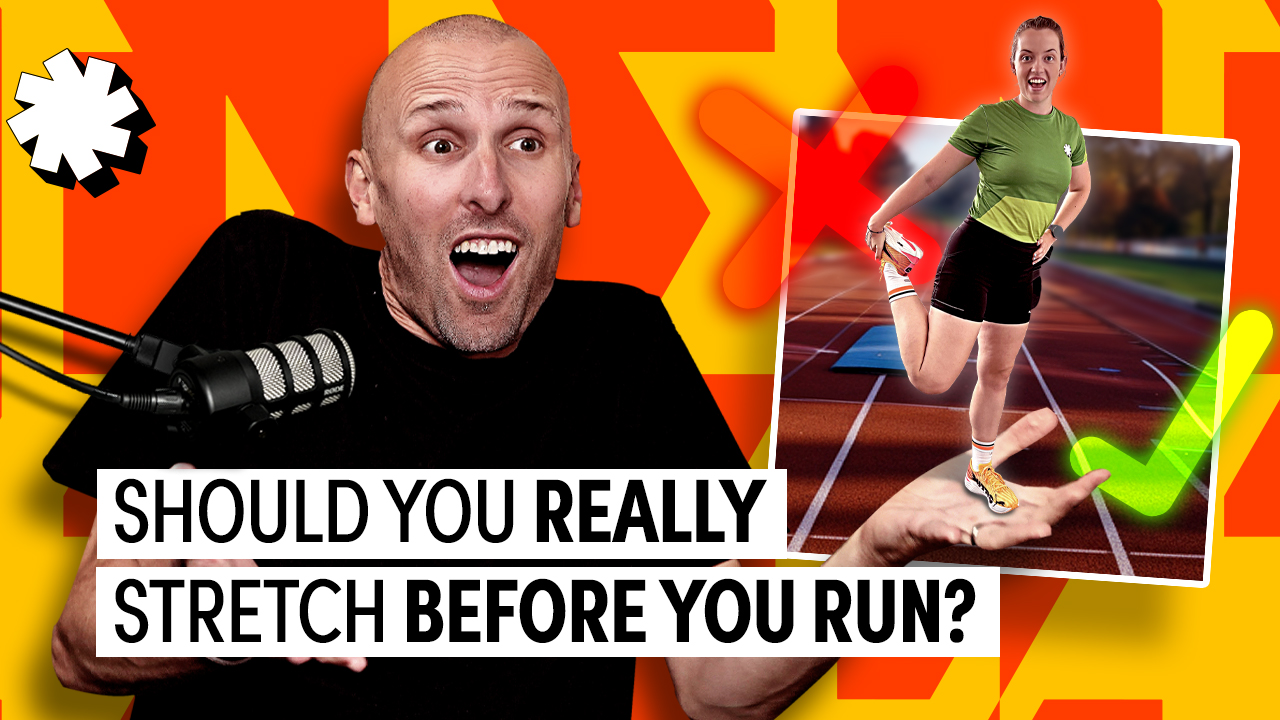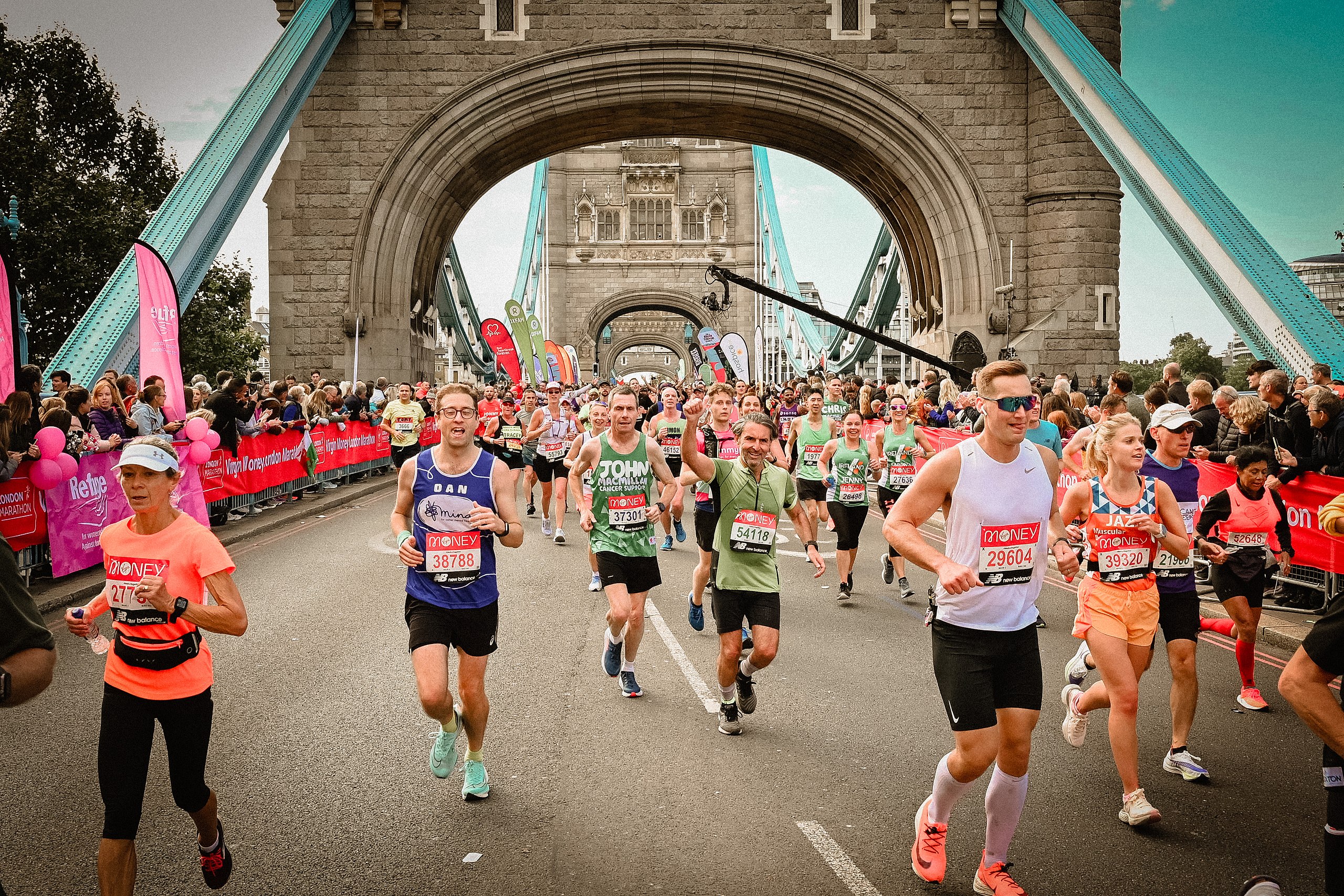Should You Stretch Before A Run?

This is one of those common questions we hear at The Running Channel: should you stretch before a run?
Can stretching before a run help to prevent injury? What’s the best way to warm up before a run? Should we stretch after we run? Here’s everything you need to know about running and stretching.
WHAT’S THE PURPOSE OF STRETCHING?
There’s a common thought that we stretch before exercise to ‘warm up’ our muscles, and that this will help us avoid injuries. But that’s not necessarily true.
The main reason people should stretch is to try and increase flexibility and range of motion in their muscles, and research shows that repeated stretching and using your muscles can indeed help with that.
This is especially important if we’ve spent all day sitting at a desk. Certain important running muscles like our hamstrings can get tight from hours in a seated position, and stretching can improve flexibility and alleviate aches and tightness.
But if we jump up from a day at our desk and go straight into a run or another sporting activity, we’re taking our muscles from a narrow range of motion and asking them to work at a full range, which could damage the muscles or the joints they connect to.
However, this doesn’t mean stretching is the best thing to do before a run… In fact, for many people, static stretching is something to avoid before running. But you do need to do a warm up.
WHAT HAPPENS IF YOU STRETCH BEFORE A RUN?
Picture someone stretching, and you probably imagine them doing something like touching their toes and stretching their thigh muscle by pulling their heel to their butt. This is known as static stretching. It’s something that people have long believed they should do before running, probably learnt from school.
But there’s no research which suggests static stretching is beneficial before exercise, and some research even suggests it may impede your performance – though it’s not really understood why it does this. Either way, it doesn’t necessarily help us, so there’s no need to do it. Instead we should think about dynamic stretches or movements before running.
STATIC VS DYNAMIC STRETCHES
There are two main types of stretch: static and dynamic. They can both be important for runners, but you’ll want to perform them at different times.
Static stretching means holding a stretch position. Imagine taking your foot and pulling it back so that it’s touching your butt. This is a classic stretch for your quads, or thighs. Bending over to touch your toes is a stretch for your hamstrings. You are stationary when you are holding these stretches and you can feel the muscle being physically stretched, or pulled.
These static stretches can help to improve your flexibility and range of motion, but if you do them before running then it can actually lead to decreased performance.
Dynamic stretching is something that we do with a movement. Some of these are used as activation stretches which work to ‘activate’ or mobilise a specific muscle or muscle group. For example, doing clam shells or banded sideways walks both activate the glute muscles.
There are also dynamic movements which aim to take a joint through a range of motion while also increasing blood flow to muscles. This could be leg swings, hip circles, windscreen wipers, walking lunges, walking butt kicks or standing high knees.
WHY IS DYNAMIC MOVEMENT GOOD BEFORE A RUN?
It’s good to consider these as a series of dynamic moves which help prepare you for a run.
Think of it like doing something to switch each muscle on before you run.
Do something for your calves, quads, hamstrings, adductors, glutes, back, core and shoulders. It doesn’t need to be much, and most runners may only spend a minute or two performing a few movements, but that’s enough to prepare your muscles before an easy run.
WHAT’S A GOOD WARM UP FOR RUNNERS?
We recommend a mix of dynamic movements before going for a run. Aim to take the major muscles through a range of movements. Think about the running motion and how those muscles will be used: walking high knees, walking butt kicks, heel to toe walks, bunny hops, arm swings, leg swings.
You can also do some more ballistic movements at a higher intensity, and more specific running drills like A-skips, B-skips, straight legs, running high knees and butt kicks. If you want to know more about running drills then here’s Andy showing Sarah how these drills can improve running form.
SHOULD YOU DO DIFFERENT STRETCHES BEFORE A RACE OR WORKOUT?
Yes, you should aim to do an extended warmup and more activations to help you get ready for a harder effort.
After some activations and dynamic movements of the main muscles and joints, you could go for a short easy run to get your legs warmed up and moving, and to slightly increase your heart rate.
Then you can move into some drills to help you work on your form, so some A-skips, B-skips, straight leg runs, butt kicks and high knees. Then when you’re feeling warmed up, run a series of fast strides to get your muscles working hard for a short period.
IS IT OK TO STRETCH AFTER A RUN?
Yes! Doing static stretches after a run can be a good idea.
Stretching, as we’ve seen, can help to improve your flexibility and range of motion (and for lots of people it also feels quite nice and is a good way to cool down after a run).
The ideal amount of time to hold a stretch is 10-30 seconds, and doing that stretch 2-4 times is fine. Don’t ‘bounce’ in the stretch and just hold it still at a point where you feel it tighten. There’s no proven benefit for doing more than this volume of stretching for each muscle group.
Stretching once will make no noticeable difference, but regularly stretching can gradually improve your flexibility over months and years.
You can think about going through the major muscle groups for running and trying to improve your flexibility: calves, quads, hamstrings, glutes, hips and back. And focus on any areas where you specifically feel tightness in your body.
While it’s not the same as stretching, foam rolling can also be a good thing to add as an additional recovery tool after a run – it can also help to warm up muscles before a run.
WHEN TO AVOID STRETCHING
It’s OK to stretch a muscle that’s sore from exercise (delayed onset muscle soreness), but avoid stretching a muscle it if is injured or you’ve strained it as that could make the injury worse.
***
If you want to hear more about stretching and running, then here’s Andy, Sarah and Rick talking all about stretching.


























Running News
Ingebrigtsen Stars at World Athletics Indoor Championships 2025 – Plus All The Winners!
Sam Ruthe Is First 15-Year-Old To Run A Four-Minute Mile!
Eliud Kipchoge Will Run The 2025 Sydney Marathon!